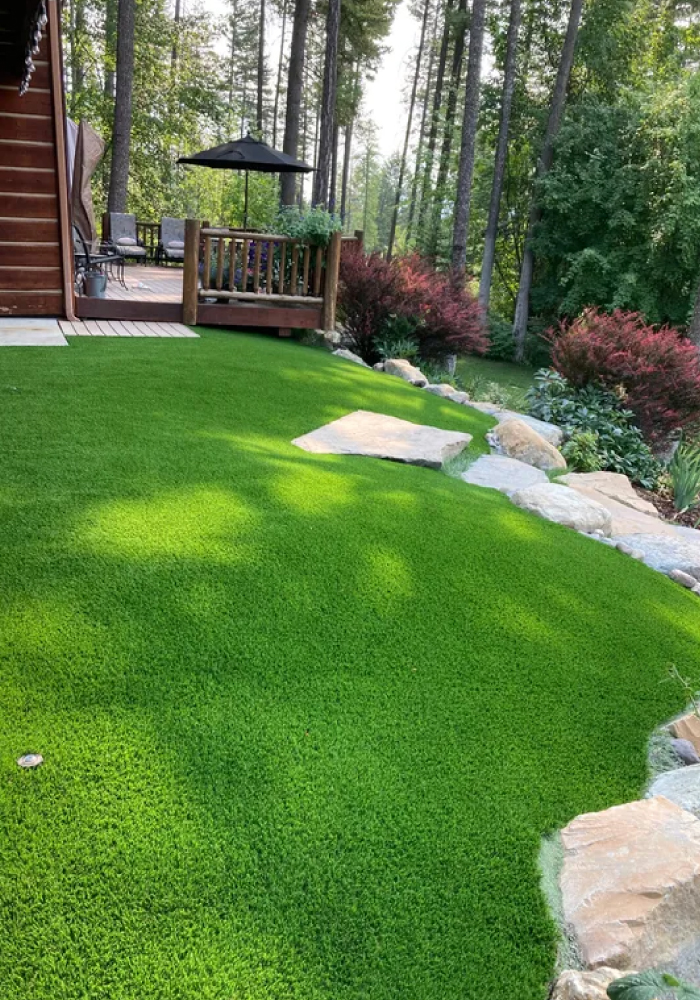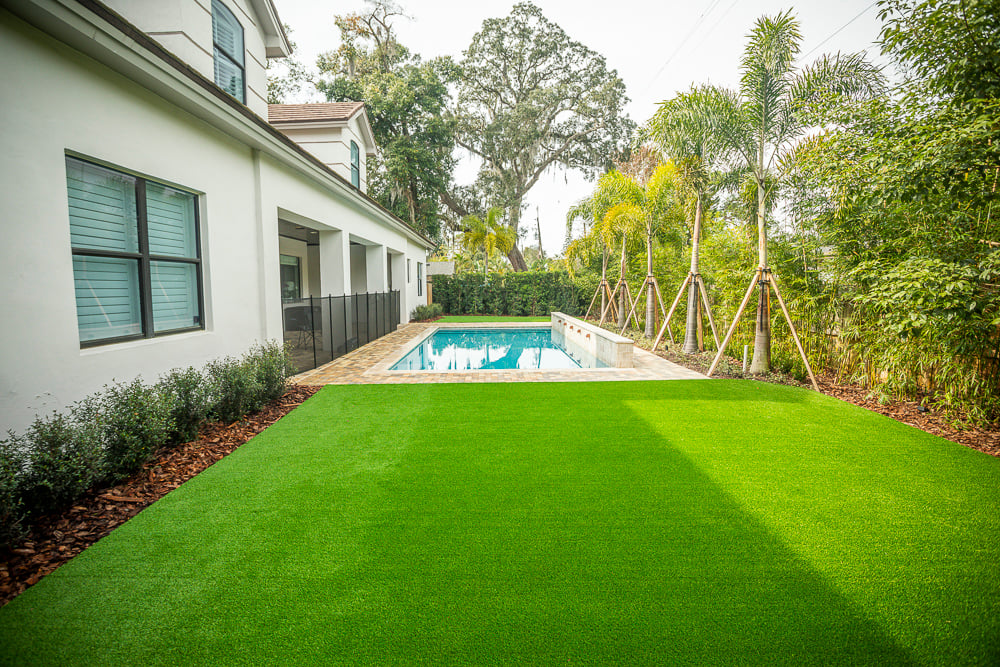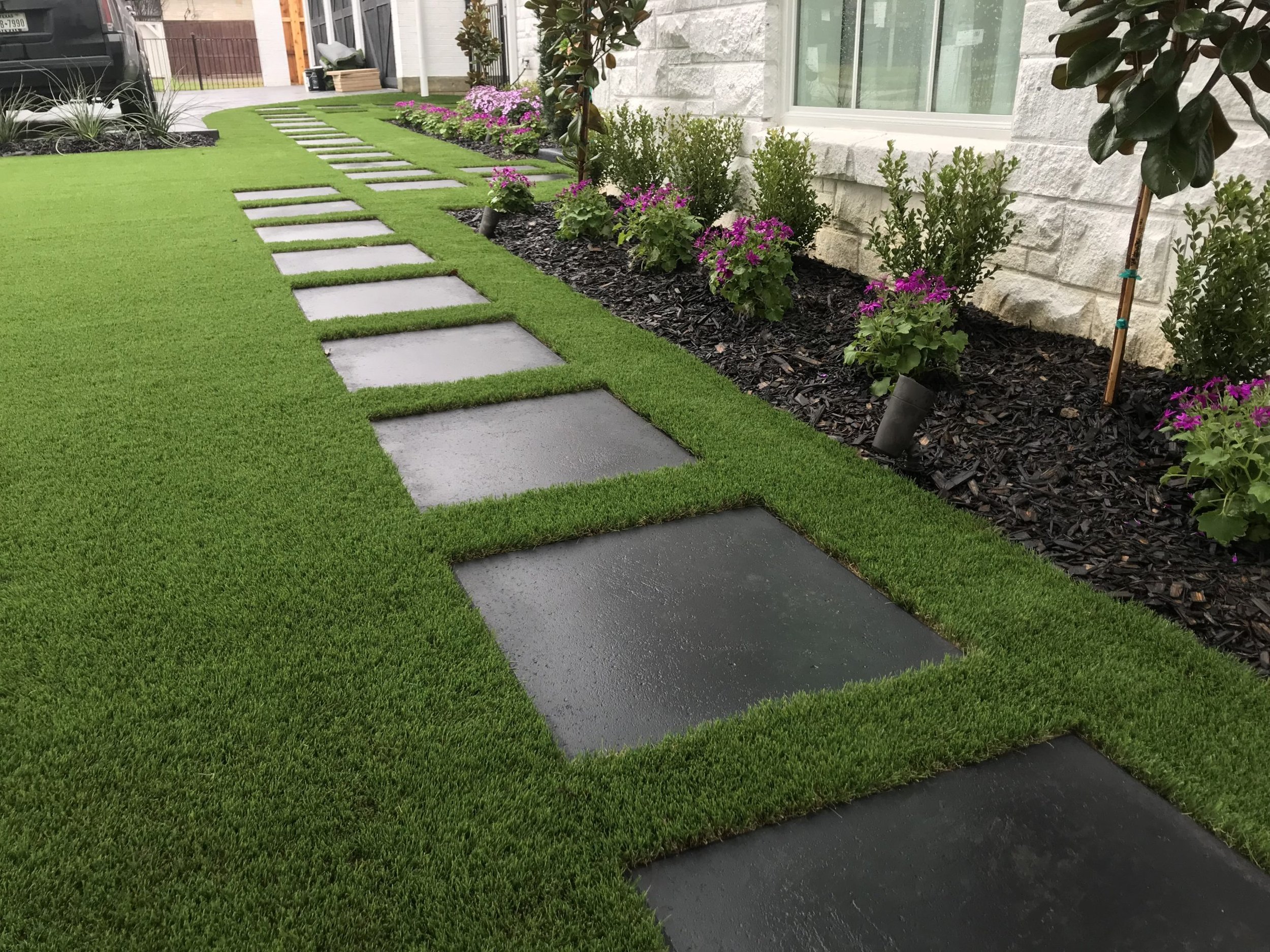Well-Known Phoenix Turf Companies Providing Superior Synthetic Grass Installation
Well-Known Phoenix Turf Companies Providing Superior Synthetic Grass Installation
Blog Article
Delve Into the Environmental Advantages of Opting for Synthetic Grass Solutions
The adoption of synthetic lawn solutions presents an engaging opportunity to attend to pushing ecological challenges. By significantly reducing water usage and lessening the application of damaging chemicals, these choices not only advertise lasting landscape design however also shield regional ecological communities.
Water Conservation Advantages
One of one of the most substantial benefits of fabricated grass is its capacity to save water. Conventional yard lawns call for significant watering, specifically in locations vulnerable to dry spell or water restrictions. On the other hand, synthetic grass does not require watering, considerably minimizing the total demand for water resources. This feature is particularly beneficial in deserts where water shortage is a pressing problem.
By eliminating the demand for normal watering, synthetic grass adds to lasting landscape techniques and assists mitigate the ecological influence of extreme water intake. The preservation of water expands to the decrease of drainage, which can lead to dirt disintegration and river contamination.
Additionally, the installment of artificial turf allows towns and house owners to allot water sources more efficiently, concentrating on vital uses such as drinking water and farming. The change in the direction of fabricated grass not just advertises accountable water use but likewise straightens with broader ecological objectives focused on maintaining natural deposits.
As neighborhoods progressively prioritize sustainability, the water conservation advantages of synthetic grass present an engaging situation for its fostering in commercial and property landscaping tasks.
Lowered Chemical Use
The change to synthetic grass significantly decreases the dependence on chemical therapies frequently made use of in all-natural grass upkeep. Standard grass management commonly includes the application of plant foods, herbicides, and pesticides to promote development and control parasites. These chemicals can position dangers to human health, regional wildlife, and the environment, contributing to soil and water contamination.
In comparison, artificial turf removes the need for these harmful materials. By decreasing the release of synthetic compounds into the ecosystem, man-made grass advertises much healthier soil and water systems.
Moreover, the absence of chemical drainage connected with synthetic grass installments aids secure regional rivers from air pollution, supporting marine life and maintaining biodiversity. Phoenix turf companies. As communities increasingly focus on lasting methods, opting for synthetic grass offers a viable solution that lines up with ecological preservation objectives. Through this shift, homeowner can appreciate lush environment-friendly rooms without jeopardizing environmental health, leading the means for an extra sustainable future
Reduced Carbon Impact

Additionally, the setup of fabricated turf can lead to considerable water conservation. All-natural lawns require considerable quantities of water for resource watering, which not only includes in the carbon impact connected with water extraction and treatment however additionally strains neighborhood water sources. On the other hand, artificial grass needs minimal maintenance, requiring no watering, thereby significantly decreasing water use and its linked power prices.
Additionally, the long life of synthetic grass adds to its lower carbon influence. With a lifespan of up to 15 years or more, the demand for constant replacements is lessened, leading to much less waste and reduced energy intake in manufacturing and disposing of standard turf choices. Overall, synthetic grass presents a lasting alternative for environmentally aware landscape design.
Environment Preservation
Environment conservation is a crucial factor to consider in the dispute over landscape design choices, particularly when comparing synthetic grass to natural lawn. All-natural yard yards typically call for check that substantial upkeep, consisting of making use of herbicides, fertilizers, and chemicals, which can adversely affect neighborhood environments. These chemicals can seep into the dirt and waterways, hurting native flora and fauna and interfering with neighborhood habitats.
On the other hand, man-made lawn presents a possibility to reduce the eco-friendly impact of landscape design. By choosing synthetic turf, homeowners can minimize the interruption of natural environments connected with typical lawn treatment techniques. Synthetic grass eliminates the need for unsafe chemicals, thus safeguarding close-by wildlife and preserving the honesty of surrounding environments. The setup of artificial grass can lead to the conversion of previous grass locations into even more biodiverse landscapes, such as pollinator gardens or native plant areas, which can sustain regional wild animals.
Inevitably, the change to synthetic grass not only preserves water and minimizes maintenance efforts yet also fosters an extra unified partnership between human activities and the natural surroundings, promoting habitat conservation at the same time.
Long-Term Sustainability
Long-term sustainability is a critical element in evaluating the benefits of artificial lawn over conventional yard lawns. Among one of the most substantial benefits of synthetic grass is its durability; it can last approximately 15-20 years with very little upkeep, whereas all-natural turf needs regular reseeding and replacement. This durability lowers the demand for continuous resources, such as water, fertilizers, and chemicals, which are essential for keeping a healthy and balanced grass yard.
Additionally, synthetic grass adds to a reduction in carbon discharges connected with lawn care devices. Traditional yards typically need gas-powered lawn mowers, leaners, and blowers, every one of which add to air contamination. Arizona artificial turf. In contrast, fabricated lawn removes the demand for such sites tools, promoting a cleaner environment
Additionally, the production of man-made turf significantly makes use of recycled products, boosting its sustainability profile. As manufacturers embrace eco-friendly methods, the environmental footprint of synthetic grass remains to decrease.

Verdict
The adoption of artificial grass solutions provides considerable ecological benefits, including significant water preservation, minimized dependence on unsafe chemicals, and a lower carbon footprint. Fabricated lawn aids in maintaining natural habitats by reducing land disruption and advertising long-lasting sustainability via the use of long lasting materials. Jointly, these variables emphasize the possibility of fabricated grass to add positively to environmental wellness and offer a viable choice to typical landscape design methods in a progressively resource-conscious world.
In comparison, fabricated turf does not require watering, significantly decreasing the overall demand for water resources. By lessening the launch of artificial substances into the community, artificial grass advertises healthier soil and water systems.
In addition, the installation of artificial lawn can result in significant water preservation. In contrast, fabricated grass needs minimal upkeep, needing no watering, thus significantly reducing water use and its associated power prices.

Report this page